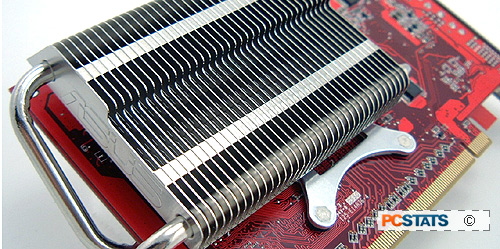Did you know that the smallest PCI Express
connection, the PCI Express x1 slot, offers peripheral dedicated bandwidth
that is almost the same as what the entire PCI bus had to offer? The videocard
friendly PCI Express x16 slot dishes out four times the bandwidth
that the 8x AGP bus provided... that's four times. If your PC is still powered by any graphics card with the words AGP emblazoned on it, it really is high time you upgraded.
As an incentive to move towards the more advanced PCI Express technology,
virtually all manufacturers are releasing the coolest graphics cores and
technologies almost exclusively in PCI Express flavours. While the odd
AGP videocard will surface once a year, it is really is a retired
technology with no guarantee of upgradability. PCI Express is
much more versatile, and there are all sorts of high bandwidth peripherals like
Serial ATA RAID controllers, Gigabit NICs and SCSI cards hitting the market to
take advantage of.
My personal favorite are PCI Express videocards, and
particularly 100% silent videocards. Devices like the Asus EAX1600XT
Silent/TVD/256M/A videocard won't eat up the 8GB/s worth
of bandwidth the PCI Express x16 bus has to offer, but this passively cooled graphics card strikes a
good balance between price and 3D rendering power. With a retail price of $193 CDN ($175 US, £94 GBP), the
EAX1600XT Silent is a very versatile videocard thanks to its silent cooling system and ATi Radeon X1600XT graphics processing unit.
The Asus EAX1600XT Silent/TVD/256M/A is supported with 256MB of GDDR3 Infineon memory, which is only located on the front of the videocard. Asus equips the EAX1600XT Silent with a DVI/Analog combination output and should users want to use dual analog monitors, a DVI converter connector is bundled in. The EAX1600XT Silent supports standard definition VIVO (thanks to the Rage Theatre chip) however component output (Y, Pb, Pr) is noticeably absent.
 ATi Radeon X1600 XT videocards like the Asus EAX1600XT Silent/TVD/256M/A are refreshingly compact. The passive heatsink juts out on the rear of the videocard somewhat, but you shouldn't have problems installing this card into most cramped cases.
ATi Radeon X1600 XT videocards like the Asus EAX1600XT Silent/TVD/256M/A are refreshingly compact. The passive heatsink juts out on the rear of the videocard somewhat, but you shouldn't have problems installing this card into most cramped cases.
One area where the Asus EAX1600XT Silent may have
problems is with motherboards that use large Northbridge heatsinks close to the PCI Express x16 slot. Since the heatpipe heatsink on the rear of the videocard extends out some distance, it's possible that there could be some interference. The heatsink doesn't extend all the way to the base of the videocard, so most Northbridge heatsinks should have plenty of clearance no matter how close they are to the videocard slot.
The heatpipe heatsink that keeps the Radeon X1600 XT
core cool on the Asus EAX1600XT Silent/TVD/256M/A videocard looks quite
nice and works very well. The VPU comes in contact with an aluminum heat spreader which transfers the heat to two heatpipes. The heatpipes are attached via a black heat spreader with the Asus name on it. The heat is moved to a 38 fin aluminum radiator on the rear of the videocard. There are no fans used to cool the videocard, it's design is intended to take advantage of exhaust air from the the CPU heatsink, and system airflow to keep temperatures within acceptable range.
If you're contemplating equipping your system with the
Asus EAX1600XT Silent/TVD/256M/A, it's vital that you have good air circulation in your computer system! With no air passing on top of the aluminum radiator, VPU temperatures eventually broke the 100 degree Celsius mark which is a bit too hot for videocards to run at. With a bit of airflow, VPU temperatures quickly settled down do the low 40s while under load.

The software package that comes with the Asus EAX1600XT Silent/TVD/256M/A is strong;
four full version games (Xpand Rally, Savage, Billy Blade and Mashed) are bundled. Asus
also seems to have forgotten any multimedia editing software, probably a good
idea to include since the EAX1600XT Silent supports VIVO.
Up next,
Crossfire and the ATI Radeon X1600XT videocard core overclocked...

